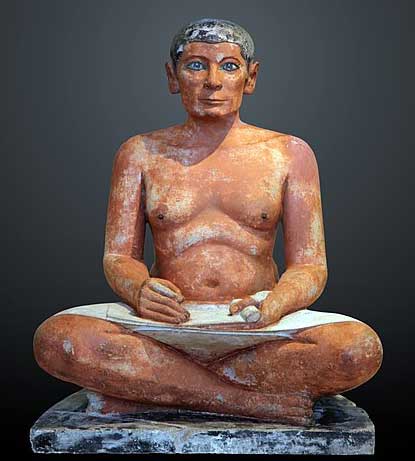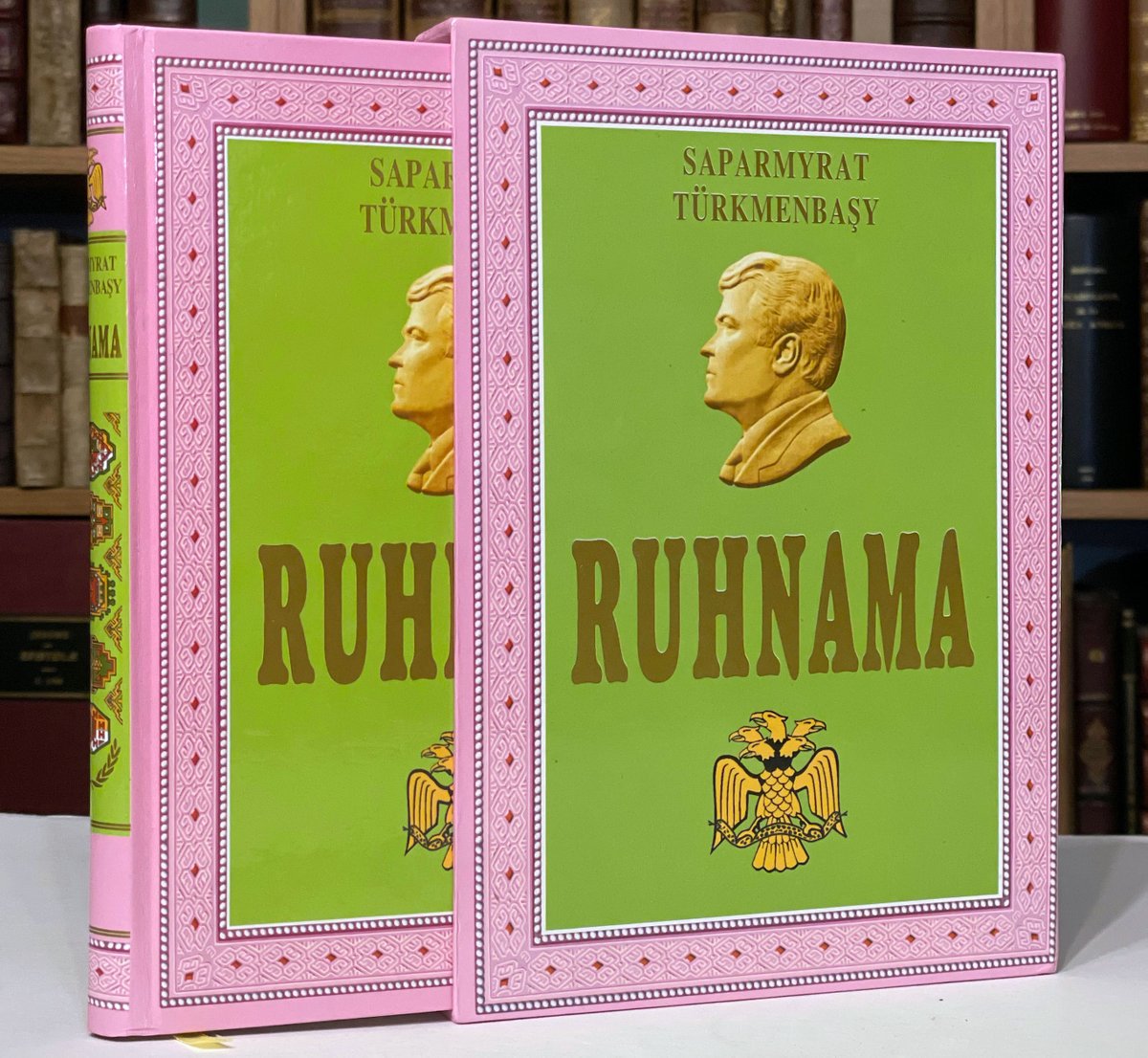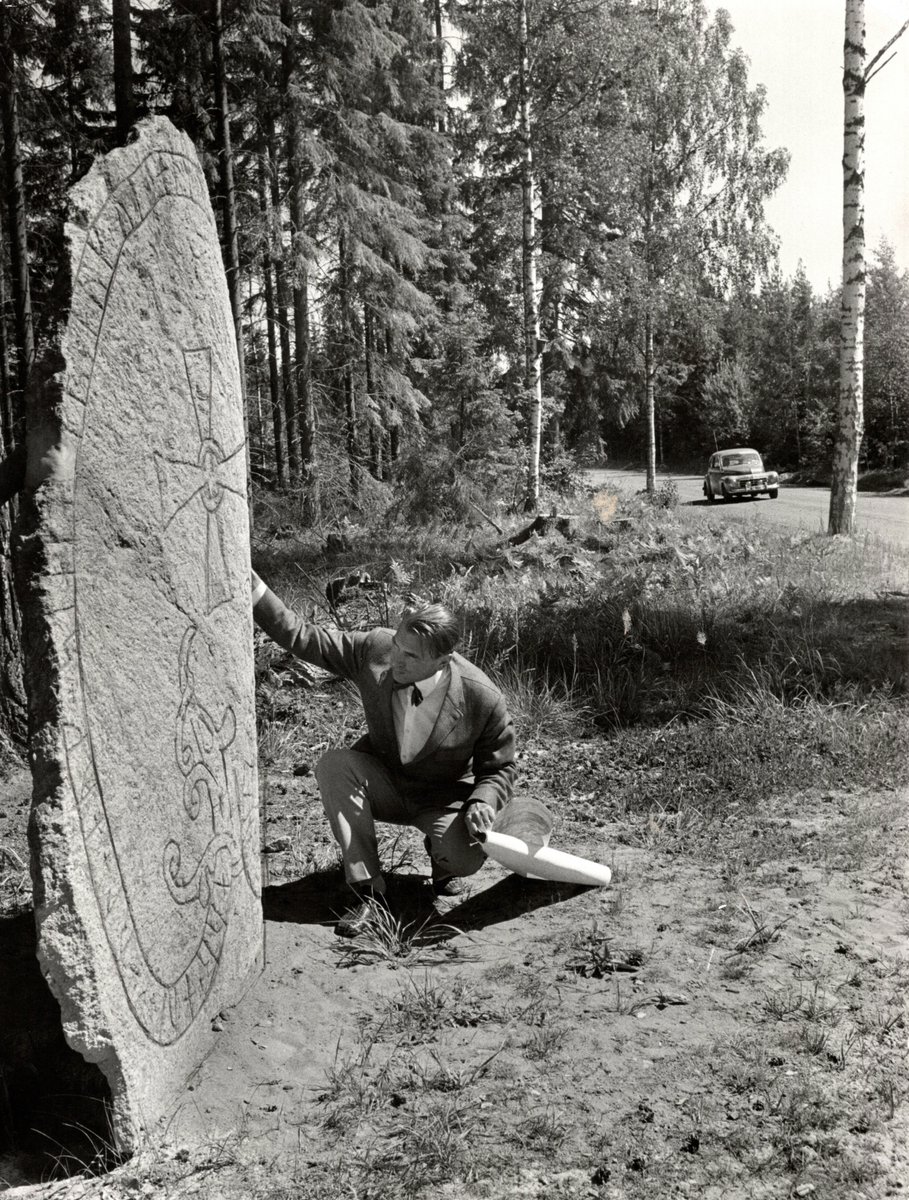
Bibliophile.
The history of writing and of the book - across ALL cultures, from cuneiform 𒀁 to scroll 📜 to codex 📖 to Kindle.
34 subscribers
How to get URL link on X (Twitter) App


 After their expulsion from France in the 14th-century, a handful of Jews remained in the Provençal Papal territory of the Comtat Venaissin. Avignon was one of four Jewish communities tolerated by the Holy See: the other 3 were Carpentras, Cavaillon, & L'isle-sur-la-Sorgue. 2/
After their expulsion from France in the 14th-century, a handful of Jews remained in the Provençal Papal territory of the Comtat Venaissin. Avignon was one of four Jewish communities tolerated by the Holy See: the other 3 were Carpentras, Cavaillon, & L'isle-sur-la-Sorgue. 2/ 

 The number of Roma killed during the Samudaripen is still unclear - the US Holocaust Memorial Museum puts the figure of Roma dead at between a quarter of million and a half a million people. 2/
The number of Roma killed during the Samudaripen is still unclear - the US Holocaust Memorial Museum puts the figure of Roma dead at between a quarter of million and a half a million people. 2/ 

 The eyes of the scribe are sculpted from red-veined white magnesite, inlaid with pieces of polished rock crystal. The inner side of the crystal was painted with resin which gives a piercing blue colour to the iris and also holds them in place. 2/
The eyes of the scribe are sculpted from red-veined white magnesite, inlaid with pieces of polished rock crystal. The inner side of the crystal was painted with resin which gives a piercing blue colour to the iris and also holds them in place. 2/ 

 Hundreds of tablets written in Rongorongo existed as late as 1864 but most were lost or destroyed in that period and only 26 of undoubted authenticity remain today; almost all inscribed on wood. Each text has between two and over two thousand glyphs (some have what appear to be compound glyphs). 2/
Hundreds of tablets written in Rongorongo existed as late as 1864 but most were lost or destroyed in that period and only 26 of undoubted authenticity remain today; almost all inscribed on wood. Each text has between two and over two thousand glyphs (some have what appear to be compound glyphs). 2/

https://twitter.com/aprajitanefes/status/1677677404247162880
 One of many previous threads on these fakes.
One of many previous threads on these fakes.https://twitter.com/incunabula/status/1454786424268537857



 The tortillon celebrates the feast days of Notre-Dame de Bon-Encontre in May.
The tortillon celebrates the feast days of Notre-Dame de Bon-Encontre in May. 
 The Ruhnama was introduced to Turkmen culture in a gradual but increasingly all-pervasive way. Niyazov first placed copies in all the nation's schools and libraries - but by the end of his reign, an exam on its teachings was an essential element of the driving test... 2/
The Ruhnama was introduced to Turkmen culture in a gradual but increasingly all-pervasive way. Niyazov first placed copies in all the nation's schools and libraries - but by the end of his reign, an exam on its teachings was an essential element of the driving test... 2/ 

 After an introduction to semiotics and other digressions, Sebeok comes to his proposed solution: what he calls "Folkloric Relay" & the "Atomic Priesthood". The first involves the use of artificially created myth - perhaps something along the lines of "this ground is cursed". 2/
After an introduction to semiotics and other digressions, Sebeok comes to his proposed solution: what he calls "Folkloric Relay" & the "Atomic Priesthood". The first involves the use of artificially created myth - perhaps something along the lines of "this ground is cursed". 2/ 





 In "Yosl Rakover", written in Yiddish by Kolitz in 1946 and set In the final days of the Warsaw Ghetto, Rakover, a pious Jew challenges God "And so, my God, before I die, freed from all fear, beyond all terror, [...], I will allow myself to call you to account one last time." 2/
In "Yosl Rakover", written in Yiddish by Kolitz in 1946 and set In the final days of the Warsaw Ghetto, Rakover, a pious Jew challenges God "And so, my God, before I die, freed from all fear, beyond all terror, [...], I will allow myself to call you to account one last time." 2/ 

 Salvetat-les-Montdragon. 2/
Salvetat-les-Montdragon. 2/ 

 Of course not all runestones contained useful restaurant directions, but Swedish motoring magazines highlighted those that did, so that motorists could plan their trips accordingly.
Of course not all runestones contained useful restaurant directions, but Swedish motoring magazines highlighted those that did, so that motorists could plan their trips accordingly. 

 West Frisian is spoken in the Dutch province of Friesland. North Frisian is spoken in the German district of Nordfriesland in Schleswig-Holstein. The only surviving variant of East Frisian, Sater Frisian, is spoken in Saterland in the Lower Saxon district of Cloppenburg. 2/
West Frisian is spoken in the Dutch province of Friesland. North Frisian is spoken in the German district of Nordfriesland in Schleswig-Holstein. The only surviving variant of East Frisian, Sater Frisian, is spoken in Saterland in the Lower Saxon district of Cloppenburg. 2/ 

 Here is the Lord's Prayer in Old Prussian, from the first of the 3 printed Lutheran catechisms, printed in Königsberg in 1545. 2/
Here is the Lord's Prayer in Old Prussian, from the first of the 3 printed Lutheran catechisms, printed in Königsberg in 1545. 2/ 

 Arabic has been used to transliterate local languages almost everywhere Islam has flourished (as, for the same reasons, has Hebrew).
Arabic has been used to transliterate local languages almost everywhere Islam has flourished (as, for the same reasons, has Hebrew). 

 This is not a religious text. It is, rather, a charter issued under the Southern Sung emperor Li-tsung (Lizong) in 1260. It confirms twelve Yao clans in the possession of their lands and recalls the legend of their divine ancestor, P’an-ku (Pangu) or P’an-hu (Panhu). 2/
This is not a religious text. It is, rather, a charter issued under the Southern Sung emperor Li-tsung (Lizong) in 1260. It confirms twelve Yao clans in the possession of their lands and recalls the legend of their divine ancestor, P’an-ku (Pangu) or P’an-hu (Panhu). 2/ 

 Last year Heineken launched 61 new products on the Russian market, roughly one every 6 days. In a statement yesterday - a full year after the invasion - they promised to exit Russia at some undefined future date when they find a suitable buyer for the business. #BoycottHeineken
Last year Heineken launched 61 new products on the Russian market, roughly one every 6 days. In a statement yesterday - a full year after the invasion - they promised to exit Russia at some undefined future date when they find a suitable buyer for the business. #BoycottHeineken 